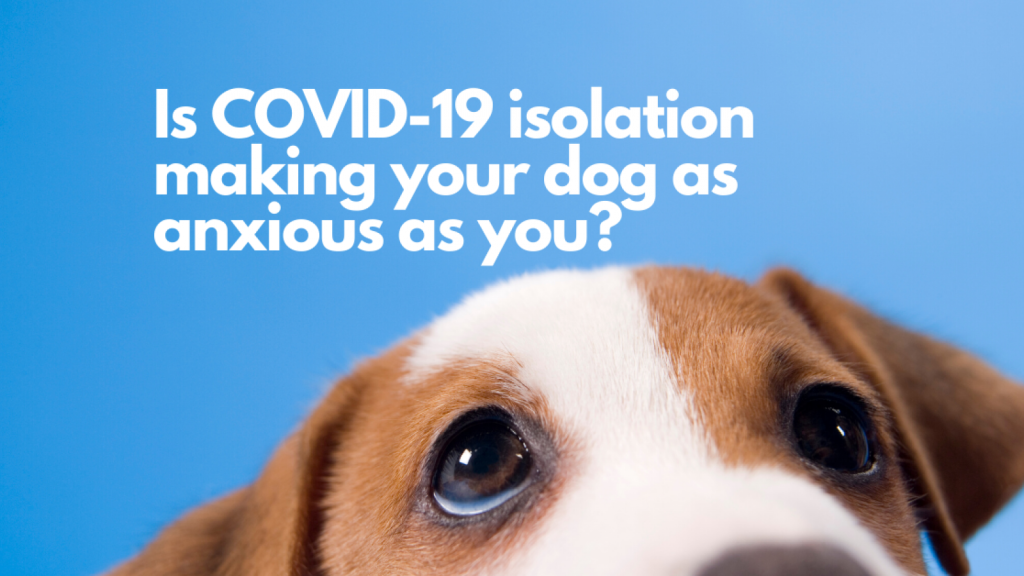How to Identify Signs of Stress and Anxiety in Pets and How to Alleviate Them

Understanding Your Pet’s Emotional Health
Many pet owners often overlook the signs of stress and anxiety in their furry companions. Just like humans, pets can experience emotional distress that may manifest in various behaviors. Recognizing these signs early can be crucial for their well-being, helping to foster a healthier and happier life for them.
Common Signs to Look For
- Changes in appetite: A sudden loss of interest in food or overeating can be significant indicators of stress. For instance, a normally enthusiastic eater may refuse to approach their bowl, while others might seek comfort in food, showcasing unhealthy eating patterns.
- Excessive barking or meowing: Vocalization that is out of character for your pet can be a cry for help. For example, a previously quiet dog may start barking incessantly when feeling anxious due to changes in their environment.
- Destructive behavior: Chewing furniture or scratching surfaces can be physical manifestations of pent-up anxiety. This is often seen when pets lack stimulation or feel insecure in their surroundings.
- Avoidance: Hiding or showing reluctance to interact with family members can indicate that a pet is overwhelmed. For example, a dog that enjoys socializing may suddenly retreat to a corner when faced with loud noises or guests.
- Physical symptoms: Signs such as trembling, excessive shedding, or grooming can signal that a pet is stressed. These behavioral changes may be exacerbated by environmental stressors common in places with high levels of activity, such as busy streets or local gatherings.
In Nigeria, where many households keep pets as family members, it’s vital to be attentive to their emotional needs. Cultural practices, such as celebrations that involve loud music or gatherings, can contribute to your pet’s anxiety levels. By understanding your pet’s signals, you can help them lead a more comfortable and satisfying life.
Calming Techniques
- Safe spaces: Create a quiet area where your pet can retreat during stressful times. A cozy corner with their favorite blanket or toys can serve as a sanctuary for them.
- Regular exercise: Engaging in play and walks can significantly reduce stress. In Nigeria’s warm climate, daily walks can also expose your pet to new sights and sounds that enhance their sensory experiences.
- Behavioral training: Consistent training methods not only teach obedience but also foster a sense of security for pets. Using positive reinforcement can help pets feel more confident, reducing anxiety over time.
In the following sections, we will dive deeper into identifying specific signs of stress and anxiety in pets and outline effective strategies to alleviate their discomfort. Understanding and addressing your pet’s emotional health is essential for ensuring they thrive in your home, creating a stronger bond between you and your beloved companion.
ADDITIONAL INSIGHTS: Expand your understanding here
Recognizing Behavioral Cues
Understanding the emotional health of our pets is vital for their overall well-being, and one of the first steps in this process is recognizing their behavioral cues. Everyday interactions can be punctuated by subtle changes that hint at underlying stress or anxiety. Paying close attention to these behaviors can help you identify when your pet is in distress and requires intervention.

Physical Behavior Changes
- Excessive licking or grooming: Many pets will resort to grooming as a self-soothing behavior. An increase in licking or grooming can lead to skin irritation or even bald patches, which are clear indicators of anxiety.
- Shaking or trembling: Just like in humans, physical manifestations of fear can include shaking, which often indicates a high level of stress. You may find your pet trembling in response to loud sounds, such as thunder or fireworks commonly experienced during festive periods in Nigeria.
- Pacing or restlessness: If you notice your pet pacing back and forth or unable to settle down, it may signal feelings of anxiety. This behavior may become more prominent during high-stress events, such as when there are guests around for traditional celebrations.
- Changes in sleeping patterns: Pets, particularly dogs and cats, require a significant amount of sleep. A sudden change in your pet’s sleeping habits, whether it is lethargy or excessive wakefulness, can indicate anxiety.
In the Nigerian context, the environment plays a significant role in your pet’s stress levels. Factors such as noise from the street or other household members can create an intimidating atmosphere for your furry friend. A dog that usually enjoys cuddling may avoid contact when feeling overwhelmed by external sounds. These behavioral cues are not just mere quirks; they are signals that your pet is experiencing distress.
Emotional Responses
Aside from physical changes, emotional responses are equally telling. Look for indications such as:
- Fear of specific situations: If your pet exhibits a sudden fear of certain events, like car rides or visiting the vet, it may be a sign of trauma.
- Aggressive behavior: In some cases, anxiety can lead to aggression. A normally gentle pet may become irritable or snap when feeling threatened.
- Over-attachment or clinginess: On the flip side, pets may become overly attached to their owners, seeking constant reassurance when they are anxious.
Being able to interpret these emotional responses is crucial. Every pet has a unique personality, and minor deviations from their usual behavior can provide significant insights into their emotional state. By honing your observational skills, you can address your pet’s stress and anxiety proactively, helping them feel secure and supported. In the next section, we will explore practical methods to alleviate their distress, ensuring that your bond remains strong and enriching.
Common Signs of Stress and Anxiety in Pets
Understanding the signs of stress and anxiety in your pets is integral to their well-being. Animals, similar to humans, display various behaviors that indicate mental distress. One of the most apparent signs is changes in behavior. For instance, an ordinarily playful dog may become withdrawn and lose interest in activities they once cherished. Cats might start hiding or exhibit aggressive behavior when their anxiety levels rise. These behavioral changes are often significant indicators that your pet is experiencing discomfort.Physical symptoms should not be overlooked either. Excessive grooming or a sudden increase in vocalization can signify an anxious state. Pets often communicate their stress through their body language. Signs such as a lowered tail, pinned ears, or dilated pupils are all cues that suggest they may be feeling threatened. Additionally, changes in appetite, either a refusal to eat or overeating, can signify stress levels that require attention.
Practical Methods to Alleviate Stress and Anxiety
Once you’ve identified the signs of stress, addressing the root causes becomes crucial. One of the most effective methods is establishing a routine. Pets thrive on predictability; regular feeding, walking, and playtimes can create a serene environment that alleviates anxiety. Furthermore, providing a safe space where your pet can retreat when feeling overwhelmed is essential. This could be a cozy corner with their favorite blanket, ensuring they have a sanctuary for relaxation.Engaging your pet in mental stimulation also plays a pivotal role in reducing anxiety. Puzzle toys, training sessions, or even simple games can keep their minds occupied and diminish stress levels. Regular physical exercise is another key factor. Daily walks or playtime not only foster physical health but also release pent-up energy that can contribute to behavioral issues.Finally, consider incorporating calming aids such as pheromone diffusers or vet-recommended supplements. These can help soothe anxious pets, bringing them to a more relaxed state. If stress and anxiety persist, consulting with a veterinarian or animal behaviorist might be necessary to create a tailored approach to your pet’s needs. Each pet is unique, and understanding their specific stressors is crucial for effective management.
| Signs of Anxiety | Management Techniques |
|---|---|
| Behavioral changes | Establishing a predictable routine |
| Physical symptoms like excessive grooming | Creating a safe space for relaxation |
| Changes in appetite | Engaging in mental stimulation through play |
Understanding and addressing your pet’s stress levels can significantly improve their quality of life. As owners, being proactive in identifying signs of stress not only enhances your pet’s well-being but also strengthens the bond you share.
RECOMMENDED: Check out this similar article
Practical Solutions for Alleviating Stress and Anxiety
Once you recognize the significant signs of stress and anxiety in your pets, the next step is to implement effective strategies to alleviate their distress. A multifaceted approach can go a long way in restoring your pet’s mental equilibrium, enhancing their quality of life and fostering a stronger bond between you and your furry companion.
Creating a Safe Space
The first priority in addressing anxiety is to establish a safe haven where your pet can retreat and feel secure. This can be achieved by setting up a comfortable corner of your home, using soft bedding, favorite toys, and familiar scents—perhaps even an old shirt of yours. In Nigeria, where the hustle and bustle can be overwhelming, creating this space becomes essential, especially for pets that might be sensitive to noise from busy streets or gatherings.
Routine and Structure
Animals thrive on routine. A consistent schedule for meals, walks, and play sessions can help your pet feel more secure, reducing anxiety levels considerably. Regular exercise cannot be overstated; it’s vital for both mental and physical health. For instance, incorporating daily walks in the neighborhood or playtime in a local park can provide crucial opportunities for socialization, helping anxious pets acclimatize to their surroundings. Regular interaction with other animals and people within a controlled environment will gradually build their confidence.
Behavior Modification Techniques
Behavioral modification strategies are essential in addressing specific anxiety issues. Positive reinforcement training can be effective, rewarding pets with treats or affection when they exhibit calm behavior in previously stressful situations. For example, if your dog becomes anxious during thunderstorms, practicing behaviors like lying down calmly in their safe space and rewarding them can help reinforce that behavior over time. It’s advisable to approach this process gradually to prevent overwhelming your pet.
Natural Calming Aids
In addition to behavioral approaches, several natural calming aids are available that can offer relief. For pets displaying chronic anxiety, consider pheromone diffusers or calming collars that release soothing scents. Additionally, supplements like valerian root or chamomile can be explored, following a consultation with a veterinarian. In Nigeria, where herbal remedies are respected, discussing plant-based calming agents may lead you to a more holistic approach to alleviating your pet’s anxiety.
Veterinary Consultation
Sometimes, the signs of stress and anxiety may not improve with home remedies or behavioral adjustments. In such cases, seeking professional guidance is invaluable. A veterinarian can assess your pet’s condition, potentially suggesting behavioral therapy, and in some cases, medications designed to reduce anxiety during acute situations. This step is especially crucial for identifying any underlying health issues contributing to their stress.
Engaging with your pet and being attuned to their needs not only strengthens your bond but also promotes a healthier, happier life for them. Ensuring that your furry friend receives the support they need during anxious moments will contribute significantly to their overall happiness and well-being in the long run. Through a combination of environmental changes, routine establishment, and professional assistance when needed, you can effectively address the signs of stress and anxiety in pets, paving the way for a more peaceful coexistence.
CHECK OUT: Click here to explore more
Conclusion
Recognizing and addressing signs of stress and anxiety in pets is essential for ensuring their overall well-being and happiness. By understanding their unique behaviors and signals, pet owners can identify when their furry friends are struggling with anxiety. The steps outlined, such as creating a safe space, maintaining a consistent routine, utilizing behavior modification techniques, and exploring natural calming aids, all contribute significantly to alleviating stress in pets.
In Nigeria, where the environment can sometimes be chaotic, providing a stable and comforting home for pets is paramount. This includes taking advantage of local resources, such as engaging with veterinarians who can provide tailored advice and treatment options. Collaboration with professionals allows pet owners to address any deeper health concerns that may be at the root of anxiety.
By implementing these strategies, you not only improve your pet’s mental health but also enhance your relationship with them. A calm and relaxed pet is more likely to engage positively with family members and adapt better to their surroundings. As a responsible pet owner, prioritizing their emotional well-being fosters a harmonious atmosphere at home.
In conclusion, addressing stress and anxiety in pets requires vigilance, compassion, and a willingness to learn. Ultimately, a proactive approach to identifying and alleviating anxiety will lead to a more fulfilling life for both you and your beloved animal companion. By exploring these methods and keeping a keen eye on your pet’s behavior, you pave the way for a happier, more secure pet, ready to thrive by your side.


